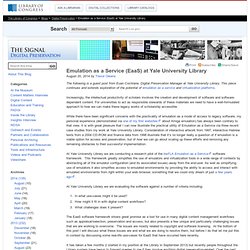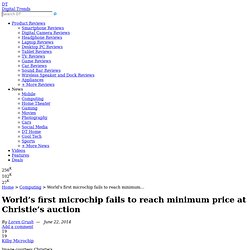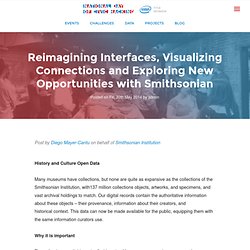

Steve Jobs' 1974 memo on how to improve Atari World Cup Soccer game expected to fetch up to $15,000 at auction. By Daily Mail Reporter Published: 03:22 GMT, 29 May 2012 | Updated: 04:08 GMT, 29 May 2012 A handwritten memo penned by Steve Jobs during his time working for game-maker Atari is expected to fetch up to $15,000 at auction.

Sotheby’s in New York is putting the document, which includes a four-page typed report, under the hammer on June 15. The Apple co-founder, who passed away last year, began working for the company at the age of 19 after leaving Reed College. For sale: Sotheby¿s in New York is putting the four-page report, and handwritten note, under the hammer on June 15 Early days: The Apple co-founder, who passed away last year, began working for the company at the age of 19 after leaving Reed College In 1974, Jobs penned a report to his former supervisor Stephen Bristow on how to improve the Atari World Cup Football game. Stash of rare Atari games dug up in Alamogordo could be sold by city. Emulation as a Service (EaaS) at Yale University Library. The following is a guest post from Euan Cochrane, Digital Preservation Manager at Yale University Library.

This piece continues and extends exploration of the potential of emulation as a service and virtualization platforms. Increasingly, the intellectual productivity of scholars involves the creation and development of software and software-dependent content. For universities to act as responsible stewards of these materials we need to have a well-formulated approach to how we can make these legacy works of scholarship accessible. While there have been significant concerns with the practicality of emulation as a mode of access to legacy software, my personal experience (demonstrated via one of my first websites about Amiga emulation) has always been contrary to that view. It is with great pleasure that I can now illustrate the practical utility of Emulation as a Service via three recent case studies from my work at Yale University Library. GAMER Group: GAme MEtadata Research. World’s first microchip fails to sell at Christie’s auction.
A huge piece of computer science history has ultimately come up short — on the auction block.

The world’s first integrated circuit, manufactured in 1958 by Texas Instruments engineer Jack Kilby, went up for auction this week at Christie’s. Erik S. Klein's Vintage Computer Collection - Home of historical computers such as Mark-8, Altair, Kenbak, Apple, Commodore and IBM as well as the VC Forum, VCGM (Marketplace) and the VC Wiki. Media Archaeological Fundus — Medienwissenschaft. Reimagining Interfaces, Visualizing Connections and Exploring New Opportunities with Smithsonian. Post by Diego Mayer-Cantu on behalf of Smithsonian Institution History and Culture Open Data Many museums have collections, but none are quite as expansive as the collections of the Smithsonian Institution, with137 million collections objects, artworks, and specimens, and vast archival holdings to match.

Our digital records contain the authoritative information about these objects – their provenance, information about their creators, and historical context. This data can now be made available for the public, equipping them with the same information curators use. Why it is important The collections available at the Smithsonian Museum represent the treasures of our country’s – and the world’s – history, art, and culture. How you can help One of the main challenges the Smithsonian faces is searchability and discoverability given the sheer size of our collections. Yet another area we’re exploring is the intersection between museum visits and portable technology. Links. Digital Preservation and Data Curation Requirements and Solutions - Practical Preservation Issues - Confluence. These are the preservation or other business driven Issues that relate to a specific Dataset and may have one or more specific Solutions developed to solve them.

The aim of an Issue page is to provide a detailed description of the preservation challenge and the requirements of the Issue Owner that will help to inform development of a Solution that solves the Issue.Click this link to create a new Issue, then edit the italicised text Unsolved issues Issues that do not have linked solutions. Why not suggest or contribute a solution? Label: unsolved_issue Appraisal and assessment issues. How Does a Museum Acquire an iPad App for its Collections? How They Got Game. These days gamers have to deal with issues like DRM, lack of support for backwards-compatibility, always-on connection requirements, and next generation consoles like the Xbox One debuting with a name to make catalogers weep.
(Seriously, what are we supposed to call the first Xbox now?) Oh, and I suppose there is also a controversy about how it seems like it won’t support used games . But let’s not talk about today’s woes, when we can dig into the past of the Cabrinety collection, a time when manufacturers cared so much about the consumer, that they included toys and treats in the packaging, for free. In no particular order, here are eight images of titles from the Cabrinety collection that came with a surprise inside. 1. A rubber insect was loose in the package, ready to horrify unsuspecting gamers with its rubbery creepiness. Is It Archive Safe? 2. Apple-1 Computers Jump in Value at Auctions. Photo More than a decade ago, at a vintage computer fair in Silicon Valley, Dag Spicer had an opportunity to buy an original Apple-1 for $2,000.

Vintage Apple computer auctioned off for $668,000.